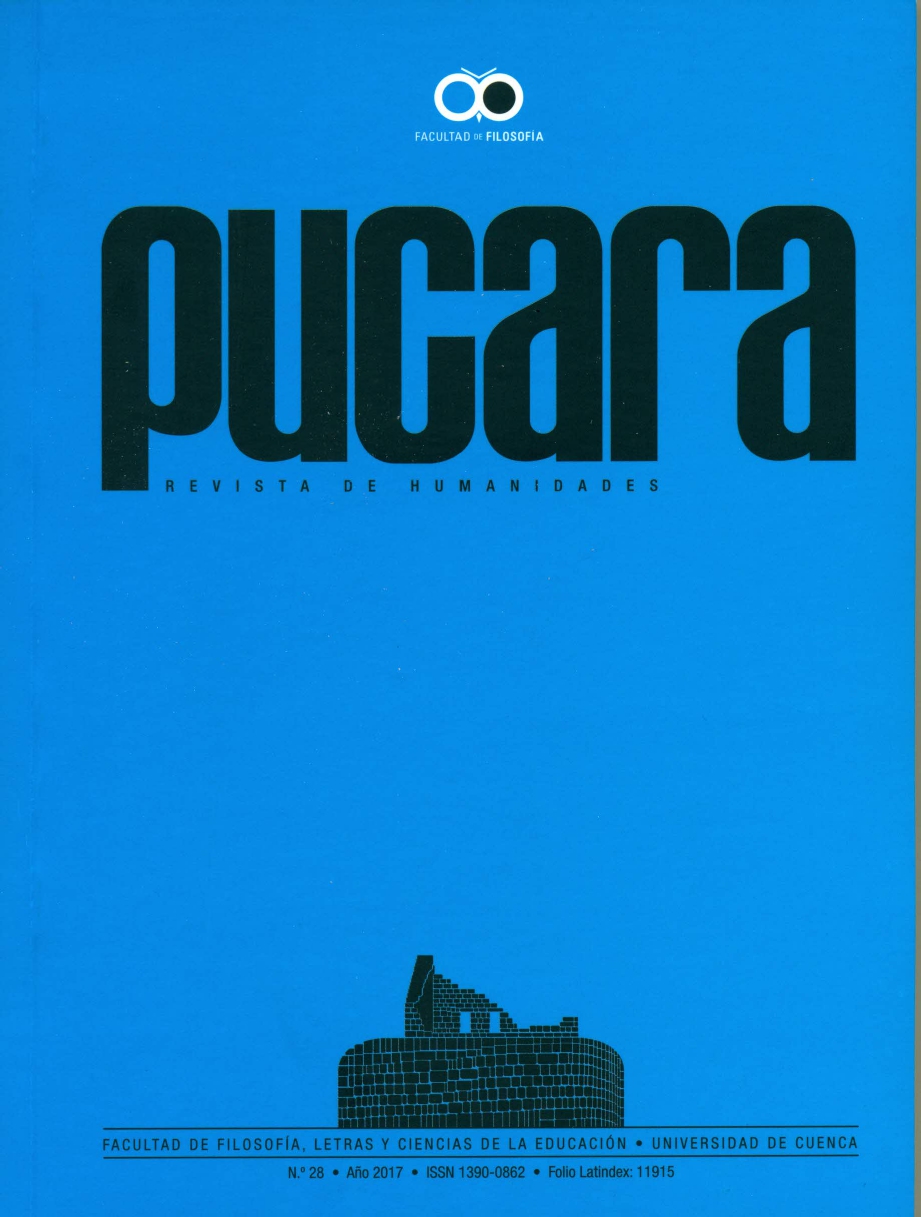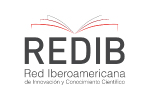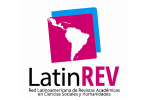Archaeology of fermented drinks: the case of the chicha mesoamerican
DOI:
https://doi.org/10.18537/puc.28.03Keywords:
bebidas fermentadas, cohesión social, tejuino, multidisciplinariedad.Abstract
The following study has the objective to analyze the archaeological ceramics (pots) recovered in Guachimontones, Mexico. In the absence of certainty about the job that was given to this artifact in antiquity, archaeometric techniques (chemical and starches) were applied to know about a specific application and subsequent operation within the social organization, taking as reference the idea that these jars used to prepare a fermented beverage. The results of the analysis indicated the use of the jars in the preparation of tejuino, complementarily comparison with ethnographic examples, where raw consumption alcohol- allowed us to infer the function of the beverage as a mechanism that allowed maintaining strong relations between the inhabitants of that space. The indicators suggest this functionality are: architectural structures emplaced around courtyards, provision and use of housing units, the presence of hearths, waste baskets, offerings (lithic and ceramics).
Downloads
References
Acosta Ochoa, G. (2009). Alimentos para la cueva: un estudio de residuos químicos y de microfósiles en vasijas cerámicas. Alimentazione e cultura nell’America indigena: archeologia, storia e antropología, (pp. 737-741). Perugia.
Barba Luis, et al. (1991). Manual de técnicas microquímicas de campo para arqueología. En Cuadernos de Investigación, Universidad Autónoma de México, Instituto de Investigaciones Antropológicas, México.
Barba, Luis, et al. (2014). Los residuos químicos. Indicadores arqueológicos para entender la producción, preparación, consumo
y almacenamiento de alimentos en Mesoamérica. Anales de Antropología 48 (1): 201-239. México.
Barlett, Peggy F. (1980). Reciprocity and the San Juan Fiesta. Journal of Anthropological Research 36 (1): (pp. 116-130).
Bauer, Brian S. (1996). Legitimization of the State in Inca Myth and Ritual. American Anthropologist 98 (2): (pp. 327-337).
Bennett, Wendell (1953). Area Archaeology. American Anthropologist 55 (1): (pp. 5-16).
Bennett, Wendell y Robert Zingg. (1978). Los Tarahumaras, una tribu india del Norte de México. Instituto Nacional Indigenista, México.
Binford, Lewis R. (1962). Archaeology is Anthropology. American Antiquity 28 (2).
Binford, Lewis R. (1965). Archaeological Systematics and the Study of Culture Process. American Antiquity 31(2): 203-210.
Bohem, Briggite, (2000). El Péndulo Interdisciplinario, arqueología, etnohistoria y anexas. Relaciones 82, Vol. XXI, El Colegio de Michoacán, México.
Brumfiel Elizabeth M. (1992). Distinguished Lecture in Archaeology: Breaking and Entering the Ecosystem-Gender, Class, and Faction Steal the Show. American Anthropologist, New Series 94 (3): (pp. 551-567).
Canady Wargo, Melissa. (2009). The Bordes-Binford debate: transatlantic interpretative traditions in Paleolithic archaeology. Tesis doctoral, Universidad de Texas.
Cruz Palma, J. (2012). Análisis de Almidones de vasijas cerámicas de las cuevas Petapa y Retazo, Ocozocoautla, Chiapas. Tesis para optar por el título de licenciado en Arqueología, Escuela Nacional de Antropología e Historia (ENAH), México.
Dietler Michael and Ingrid Herbich. (2006). Liquid Material Culture: Following the Flowof Beer among the Luo of Kenya. Grundlegungen. Beitrage zur europäischen und afrikanischen Archäologie für Manfred K. H. Eggert, Hans-Peter Wotzka (ed.), pp. 395-407, Tübingen: Francke.
Dietler Michael. (2001). Theorizing the feast: rituals of consumption, commensal politics, and power in African contexts. In Feast, archaeological and Ethnographic Perspctives on Food, Politics, and Power, edyted by Michael Dietler and Brian Hayden, pp. 65- 114. Washington.
Emberling, Geoff. (1997). Ethnicity in complex societies: archaeological perspectives. Journal of archaeological research 5 (4): (pp. 295- 344).
Esparza, Rodrigo. (2008). Informe del Salvamento Arqueológico en el Área de Servicios y Centro de Interpretación del Sitio Arqueológico Guachimontones, Co-Directores Phil Weigand Moore y Rodrigo Esparza López, Secretaría de Cultura Gobierno de Jalisco.
Flannery, Kent V. (1972). The Cultural Evolution of Civilizations. Annu. Rev. Ecol. Syst., 3: (pp. 399-426).
Fournier García, P. (1995). Etnoarqueología cerámica Otomi, Maguey, Pulque y alfarería entre los HÑAHÑU del Valle del Mezquital. Tesis doctoral en Antropología, Universidad Nacional Autónoma de México, México.
García Sánchez, M. (2011). Introducción. En Mesoamérica, debates y perspectivas, editado por Eduardo Williams, Magdalena García Sánchez, Phil Weigand y Manuel Gándara, El Colegio de Michoacán, pp. 11-22, México.
Godoy, Augusto, et. al. (2003). Más allá del pulque y el tepache: las bebidas alcohólicas no destiladas indígenas de México. Universidad Nacional Autónoma de México, Instituto de Investigaciones Antropológicas, México.
González López, Martha et al. (2012). Informe de Restauración de la pieza Olla Tejuinera. Escuela de Conservación y Restauración de Occidente, Licenciatura en Restauración de Bienes Muebles, México.
Gosden, Chris. (2002). Anthropology and Archaeology, A changing relationship. Tylor & Francis Library, London and New York.
Hastorf, Christine A. (2003). Andean luxury foods: special food for the ancestors, deities and the élite. Antiquity, Research Library, pp. 545-552.
Hastorf, Christine A. and Sissel Johannessen. (1993). Pre-Hispanic Political Change and the Role of Maize in the Central Andes of Peru. American Anthropologist, New Series 95 (1): 115-138.
Herrejón Villicaña Jorge, y Sean Smith Marquez. (2004). Las unidades habitacionales del Posclásico en la zona de Teuchitlán, Jalisco. Tesis para obtener el grado de licenciados en arqueolgía, Universidad Autónoma de Guadalajara, Facultad de Antropología, México.
Jennings, Justin. (2002). Corn, Labor and Chicha: The “Energetics” of Empowering Feasts in the Prehistoric Andes. Paper presented at the 101st Meeting of the American Anthropological Association.
Jennings, Justin. (2005). La Chichera y El Patrón: Chicha and the Energetics of Feasting in the Prehistoric Andes. Archaeological Papers of the American Anthropological Association 14: 241-259.
Kennedy, John G. (1963). Tesgüino Complex: The Role of Beer in Tarahumara Culture. American Anthropologist 65: 1-29.
Knapp, Bernard. (1998). Ideology, Archaeology, and polity, Man, New Series, Vol. 23
Lappe, Patricia, y Miguel Ulloa. (1989). Estudios Étnicos, Microbianos y Químicos del Tesguino Tarahumara. Universidad Nacional Autónoma de México, Instituto de Biología, México.
Lewenstein, Suzanne. (1995). La cerámica actual y la cerámica arqueológica de la Sierra Tarahumara. En Arqueología del Occidente y Norte de México, editado por Eduardo Williams y Phil C. Weigand, El Colegio de Michoacán, pp. 161-176, México.
London, Gloria. (2000). Ethnoarchaeology and interpretations on the past. Near Eastern Archaeology 63 (1).
Manzanilla, Linda, y Luis Barba. (1994). La arqueología: una visión científica del pasado del hombre. Fondo de Cultura Económica, La Ciencia 123, México.
Mejía Pérez, Elizabeth, y Luis Barba. (1988). El Análisis de fosfatos en la Arqueología: historia y perspectivas. En Anales de Antropología, Vol. 25, N.°1, Universidad Nacional Autónoma de México, pp. 127-147, México.
Miller, Daniel, et al. (1980). Wenner gren foundation for anthropological research, Chicago Journals.
Nielsen, Axel E. (2006). Plazas para los antepasados: Descentralización y poder corporativo en las formaciones políticas preincaicas de los Andes circumpuneños. Estudios Atacameños 31: 63-89.
Politis, Gustavo. (2002). Acerca de la Etnoarqueología en América del sur. En Horizontes Antropológicos 8: 61-91.
Service, Elman R. (1975). Origins of the State and Civilization. The Process of Cultural Evolution. W. Norton & Company INC, New York.
Simon, Arleyn, et al. (1998). Anthropological interpretations from archaeological ceramic studies: an introduction. Journal of anthropological research 54 (4).
Ulloa Miguel, et. al. (1987). Fermentaciones Tradicionales Indígenas de México. Instituto Nacional Indigenista, Serie de Investigaciones
Sociales, Colección N.°16, México.
Valdéz, Francisco. (1994). Las áreas domésticas en el sitio San Juan, Atoyac, Jalisco. En Contribuciones a la arqueología y etnohistoria del Occidente de México, Eduardo Williams editor, El Colegio de Michoacán, pp. 23-53, México.
Wilk, Richard L. and William L. Rathje. (1982). Household Archaeology. In The American Behavioral Scientist, 25 (6): 617-639.
Winning, Hasso Von. (1996). Arte Prehispánico del Occidente de México. El Colegio de Michoacán, Secretaria de Cultura de Jalisco, México.
Published
How to Cite
Issue
Section
License
Copyright (c) 2017 Miguel Novillo, Rodrigo Esparza López

This work is licensed under a Creative Commons Attribution-NonCommercial-ShareAlike 4.0 International License.
Copyright © Autors.

You are free to:
 |
Share — copy and redistribute the material in any medium or format |
 |
Adapt — remix, transform, and build upon the material for any purpose, even commercially. |
Under the following conditions:
 |
Attribution — You must give appropriate credit, provide a link to the licence, and indicate if changes were made. You may do so in any reasonable manner, but not in any way that suggests the licenser endorses you or your use. |
| NonCommercial — You may not use the material for commercial purposes. | |
| ShareAlike — If you remix, transform, or build upon the material, you must distribute your contributions under the same license as the original. |
| No additional restrictions — You may not apply legal terms or technological measures that legally restrict others from doing anything the licence permits. |












